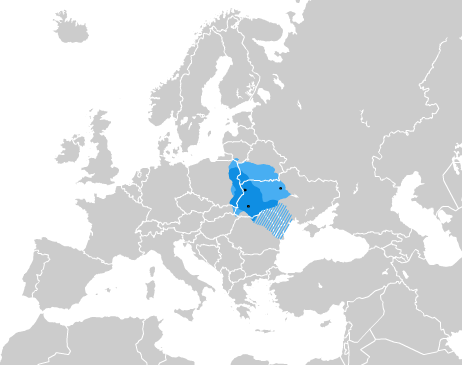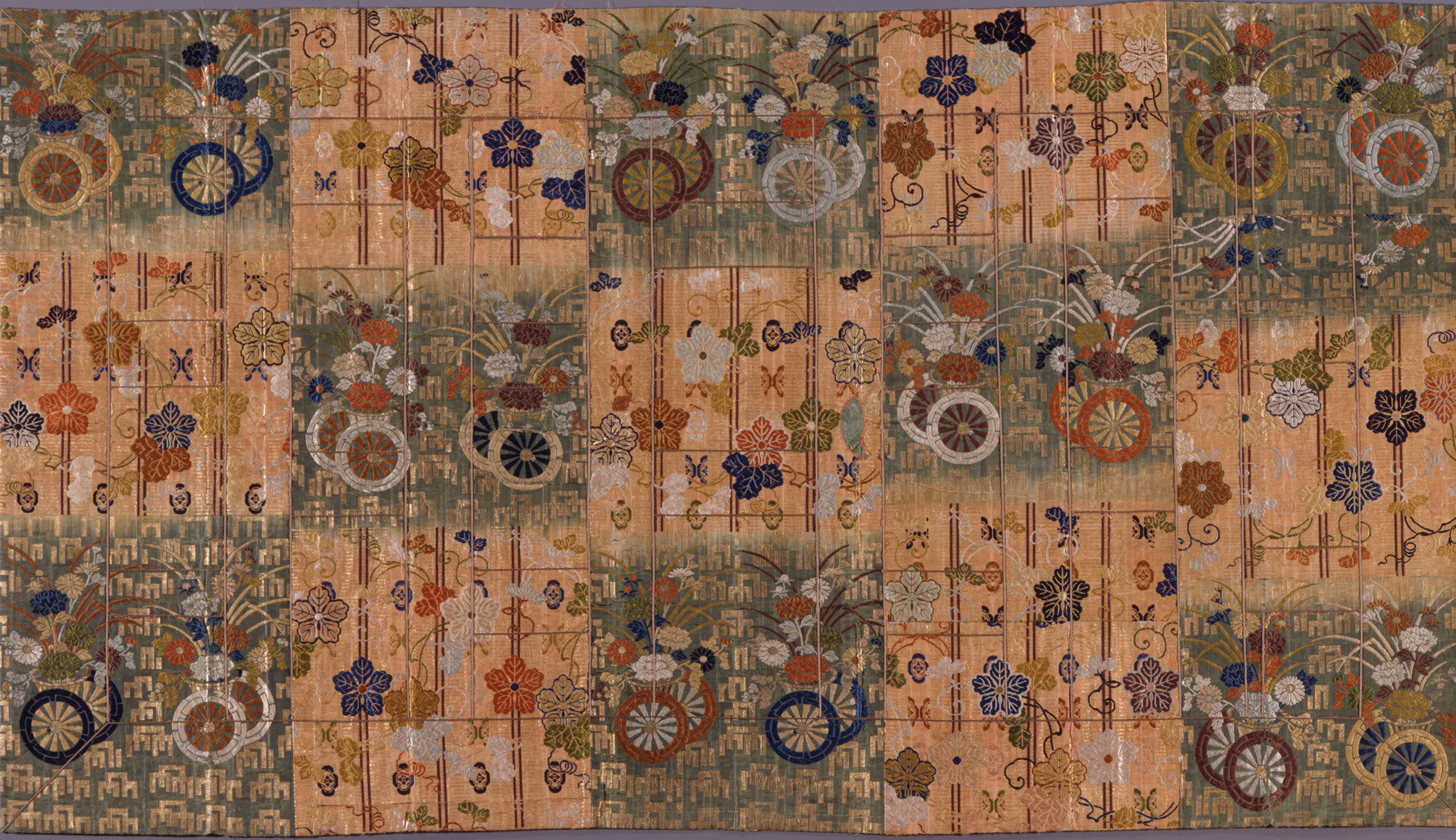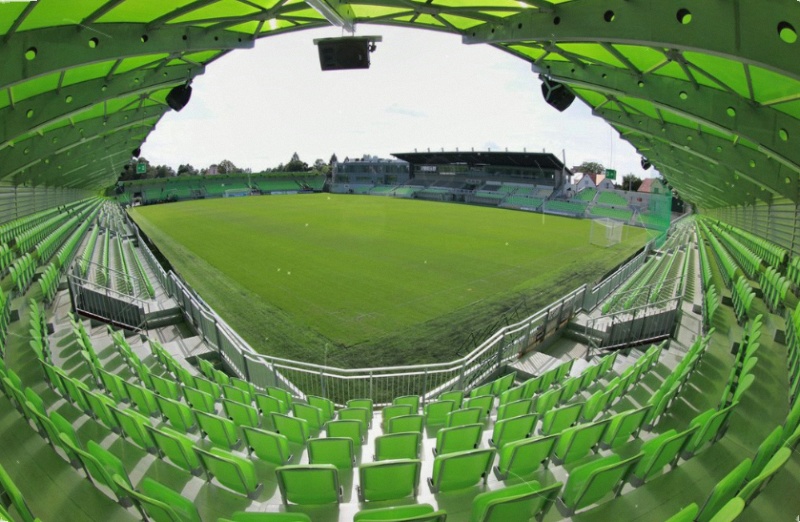|
Maria Antonina Kratochwil
Maria Antonina Kratochwil (21 August 1881 ŌĆō 7 October 1942) was beatified by Pope John Paul II as one of the 108 Martyrs of World War II. She tried to help the Jews survive during the Holocaust. In memory of Sister Maria Antonina Kratochwil and all of the Polish priests and sisters who helped Jews in need. Internet Archive. A member of the residing in the Kresy region of the [...More Info...] [...Related Items...] OR: [Wikipedia] [Google] [Baidu] |
Martyr
A martyr (, ''m├Īrtys'', "witness", or , ''marturia'', stem , ''martyr-'') is someone who suffers persecution and death for advocating, renouncing, or refusing to renounce or advocate, a religious belief or other cause as demanded by an external party. In the martyrdom narrative of the remembering community, this refusal to comply with the presented demands results in the punishment or execution of an actor by an alleged oppressor. Accordingly, the status of the 'martyr' can be considered a posthumous title as a reward for those who are considered worthy of the concept of martyrdom by the living, regardless of any attempts by the deceased to control how they will be remembered in advance. Insofar, the martyr is a relational figure of a society's boundary work that is produced by collective memory. Originally applied only to those who suffered for their religious beliefs, the term has come to be used in connection with people killed for a political cause. Most martyrs are conside ... [...More Info...] [...Related Items...] OR: [Wikipedia] [Google] [Baidu] |
┼╗ywiec
┼╗ywiec () (german: Saybusch) is a town in southern Poland with 31,194 inhabitants (2019). Between 1975 and 1998, it was located within the Bielsko-Bia┼éa Voivodeship, but has since become part of the Silesian Voivodeship.It is the capital of ┼╗ywiecczyzna which is part of the Goral Lands. The town is situated in the center of the ┼╗ywiec Basin, on the So┼éa river near ┼╗ywiec Lake in the Lesser Poland historic region and includes ┼╗ywiec Landscape Park, one of the eight protected areas in the voivodeship. The 551231 ┼╗ywiec planetoid is named after the town. History ┼╗ywiec was first mentioned in a written document in 1308 as a seat of a Catholic parish. It was originally located in the place later known as ''Stary ┼╗ywiec'' (lit. "Old ┼╗ywiec"). It belonged then to the Duchy of Cieszyn, and after 1315 to the Duchy of O┼øwi─Öcim, which in 1327 became a fief of the Kingdom of Bohemia. The town was a focal point for the development of hitherto sparsely populated ┼╗ywiec B ... [...More Info...] [...Related Items...] OR: [Wikipedia] [Google] [Baidu] |
Polish Jewish
The history of the Jews in Poland dates back at least 1,000 years. For centuries, Poland was home to the largest and most significant Ashkenazi Jewish community in the world. Poland was a principal center of Jewish culture, because of the long period of statutory religious tolerance and social autonomy which ended after the Partitions of Poland in the 18th century. During World War II there was a nearly complete genocidal destruction of the Polish Jewish community by Nazi Germany and its collaborators of various nationalities, during the German occupation of Poland between 1939 and 1945, called the Holocaust. Since the fall of communism in Poland, there has been a renewed interest in Jewish culture, featuring an annual Jewish Culture Festival, new study programs at Polish secondary schools and universities, and the opening of Warsaw's Museum of the History of Polish Jews. From the founding of the Kingdom of Poland in 1025 until the early years of the PolishŌĆōLithuania ... [...More Info...] [...Related Items...] OR: [Wikipedia] [Google] [Baidu] |
Western Ukraine
Western Ukraine or West Ukraine ( uk, ąŚą░čģč¢ą┤ąĮą░ ąŻą║čĆą░茹Įą░, Zakhidna Ukraina or , ) is the territory of Ukraine linked to the former Kingdom of GaliciaŌĆōVolhynia, which was part of the PolishŌĆōLithuanian Commonwealth, the Austrian Empire, Austria-Hungary and the Second Polish Republic, and came fully under the control of the Soviet Union (via the Ukrainian Soviet Socialist Republic) only in 1939, following the MolotovŌĆōRibbentrop Pact. There is no universally accepted definition of the territory's boundaries (see the map, right), but the contemporary Ukrainian administrative regions or Oblasts of Chernivtsi, Ivano-Frankovsk, Lviv, Ternopil and Transcarpathia (which were part of the former Austro-Hungarian Empire) are nearly always included and the Lutsk and Rivne Oblasts (parts of the annexed from Poland during its Third Partition) are usually included. It is less common to include the Khmelnytski and, especially, the Vinnytsia and Zhytomyr Oblasts in ... [...More Info...] [...Related Items...] OR: [Wikipedia] [Google] [Baidu] |
Gestapo
The (), abbreviated Gestapo (; ), was the official secret police of Nazi Germany and in German-occupied Europe. The force was created by Hermann G├Čring in 1933 by combining the various political police agencies of Prussia into one organisation. On 20 April 1934, oversight of the Gestapo passed to the head of the '' Schutzstaffel'' (SS), Heinrich Himmler, who was also appointed Chief of German Police by Hitler in 1936. Instead of being exclusively a Prussian state agency, the Gestapo became a national one as a sub-office of the (SiPo; Security Police). From 27 September 1939, it was administered by the Reich Security Main Office (RSHA). It became known as (Dept) 4 of the RSHA and was considered a sister organisation to the (SD; Security Service). During World War II, the Gestapo played a key role in the Holocaust. After the war ended, the Gestapo was declared a criminal organisation by the International Military Tribunal (IMT) at the Nuremberg trials. History Af ... [...More Info...] [...Related Items...] OR: [Wikipedia] [Google] [Baidu] |
Religious Habit
A religious habit is a distinctive set of religious clothing worn by members of a religious order. Traditionally some plain garb recognizable as a religious habit has also been worn by those leading the religious eremitic and anchoritic life, although in their case without conformity to a particular uniform style. Uniformity and distinctiveness by order often evolved and changed over time. Interpretation of terms for clothes in religious rules could change over centuries. Furthermore, every time new communities gained importance in a cultural area the need for visual separation increased for new as well as old communities. Thus, modern habits are rooted in historic forms, but do not necessarily resemble them in cut, colour, material, detail or use. In Christian monastic orders of the Catholic, Lutheran and Anglican Churches, the habit often consists of a tunic covered by a scapular and cowl, with a hood for monks or friars and a veil for nuns; in apostolic orders it may ... [...More Info...] [...Related Items...] OR: [Wikipedia] [Google] [Baidu] |
NKVD
The People's Commissariat for Internal Affairs (russian: ąØą░čĆąŠ╠üą┤ąĮčŗą╣ ą║ąŠą╝ąĖčüčüą░čĆąĖą░╠üčé ą▓ąĮčā╠üčéčĆąĄąĮąĮąĖčģ ą┤ąĄą╗, Nar├│dnyy komissari├Īt vn├║trennikh del, ), abbreviated NKVD ( ), was the interior ministry of the Soviet Union. Established in 1917 as NKVD of the Russian Soviet Federative Socialist Republic, the agency was originally tasked with conducting regular police work and overseeing the country's prisons and labor camps. It was disbanded in 1930, with its functions being dispersed among other agencies, only to be reinstated as an all-union commissariat in 1934. The functions of the OGPU (the secret police organization) were transferred to the NKVD around the year 1930, giving it a monopoly over law enforcement activities that lasted until the end of World War II. During this period, the NKVD included both ordinary public order activities, and secret police activities. The NKVD is known for its role in political repression and for carrying out the Great ... [...More Info...] [...Related Items...] OR: [Wikipedia] [Google] [Baidu] |
Soviet Invasion Of Poland
The Soviet invasion of Poland was a military operation by the Soviet Union without a formal declaration of war. On 17 September 1939, the Soviet Union invaded Poland from the east, 16 days after Nazi Germany invaded Poland from the west. Subsequent military operations lasted for the following 20 days and ended on 6 October 1939 with the two-way division and annexation of the entire territory of the Second Polish Republic by Nazi Germany and the Soviet Union. This division is sometimes called the Fourth Partition of Poland. The Soviet (as well as German) invasion of Poland was indirectly indicated in the "secret protocol" of the MolotovŌĆōRibbentrop Pact signed on 23 August 1939, which divided Poland into " spheres of influence" of the two powers. German and Soviet cooperation in the invasion of Poland has been described as co-belligerence. The Red Army, which vastly outnumbered the Polish defenders, achieved its targets, encountering only limited resistance. Some 320,000 Pole ... [...More Info...] [...Related Items...] OR: [Wikipedia] [Google] [Baidu] |
Lw├│w
Lviv ( uk, ąøčīą▓č¢ą▓) is the largest city in western Ukraine, and the seventh-largest in Ukraine, with a population of . It serves as the administrative centre of Lviv Oblast and Lviv Raion, and is one of the main cultural centres of Ukraine. It was named in honour of Leo, the eldest son of Daniel, King of Ruthenia. Lviv emerged as the centre of the historical regions of Red Ruthenia and Galicia in the 14th century, superseding Halych, Che┼ém, Belz and Przemy┼øl. It was the capital of the Kingdom of GaliciaŌĆōVolhynia from 1272 to 1349, when it was conquered by King Casimir III the Great of Poland. From 1434, it was the regional capital of the Ruthenian Voivodeship in the Kingdom of Poland. In 1772, after the First Partition of Poland, the city became the capital of the Habsburg Kingdom of Galicia and Lodomeria. In 1918, for a short time, it was the capital of the West Ukrainian People's Republic. Between the wars, the city was the centre of the Lw├│w Voivodeshi ... [...More Info...] [...Related Items...] OR: [Wikipedia] [Google] [Baidu] |
Cieszyn
Cieszyn ( , ; cs, T─ø┼Ī├Łn ; german: Teschen; la, Tessin; szl, ─åeszyn) is a border town in southern Poland on the east bank of the Olza River, and the administrative seat of Cieszyn County, Silesian Voivodeship. The town has 33,500 inhabitants (as of December 2021), and lies opposite ─īesk├Į T─ø┼Ī├Łn in the Czech Republic. Both towns belong to the historical region of Cieszyn Silesia, and formerly as one town composed the capital of the Duchy of Cieszyn. Geography The town is situated on the Olza river, a tributary of the Oder River, which forms the border with the Czech Republic. It is located within the western Silesian Foothills north of the Silesian Beskids and Mt. Czantoria Wielka, a popular ski resort. Cieszyn is the heart of the historical region of Cieszyn Silesia, the southeasternmost part of Upper Silesia. Until the end of World War I in 1918 it was a seat of the Dukes of Teschen. In 1920 Cieszyn Silesia was divided between the two newly created state ... [...More Info...] [...Related Items...] OR: [Wikipedia] [Google] [Baidu] |
Karvin├Ī
Karvin├Ī (; pl, Karwina, , german: Karwin) is a city in the Moravian-Silesian Region of the Czech Republic. It has about 50,000 inhabitants. It lies on the Olza River in the historical region of Cieszyn Silesia. Karvin├Ī is known as an industrial city with tradition in coal mining. The historic centre in Karvin├Ī-Fry┼Īt├Īt is well preserved and is protected by law as an urban monument zone. Administrative parts Karvin├Ī is made up of nine city parts and villages: * Doly * Fry┼Īt├Īt *Hranice *L├Īzn─ø Darkov * Louky * Mizerov *Nov├® M─østo * R├Īj * Star├® M─østo Geography Karvin├Ī is located about east of Ostrava on the border with Poland, in the historical region of Cieszyn Silesia. It lies in the Ostrava Basin. The town is situated on the right bank of the Olza River. The territory is rich in ponds. History The first written mention of Karvin├Ī is from 1268. It was located on a trade route, which helped its development. It gained various privileges, but the prosperity ... [...More Info...] [...Related Items...] OR: [Wikipedia] [Google] [Baidu] |
Second Polish Republic
The Second Polish Republic, at the time officially known as the Republic of Poland, was a country in Central and Eastern Europe that existed between 1918 and 1939. The state was established on 6 November 1918, before the end of the First World War. The Second Republic ceased to exist in 1939, when Poland was invaded by Nazi Germany, the Soviet Union and the Slovak Republic, marking the beginning of the European theatre of the Second World War. In 1938, the Second Republic was the sixth largest country in Europe. According to the 1921 census, the number of inhabitants was 27.2 million. By 1939, just before the outbreak of World War II, this had grown to an estimated 35.1 million. Almost a third of the population came from minority groups: 13.9% Ruthenians; 10% Ashkenazi Jews; 3.1% Belarusians; 2.3% Germans and 3.4% Czechs and Lithuanians. At the same time, a significant number of ethnic Poles lived outside the country's borders. When, after several regional conflicts ... [...More Info...] [...Related Items...] OR: [Wikipedia] [Google] [Baidu] |







